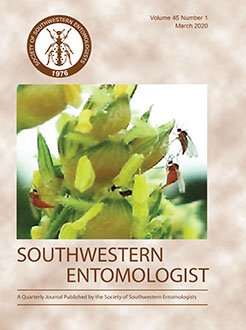When using predators or parasitoids for biological control of target pests, pesticides might be required to manage other arthropod pests and plant diseases. To minimize risk to natural enemies, growers need to be aware of which pesticides cause direct and indirect toxicity when combining biological and chemical controls. Aphidius colemani Viereck (Hymenoptera: Braconidae), an endoparasitoid of green peach aphid, Myzus persicae Sulzer (Hemiptera: Aphididae), and other aphid pests, killed after exposure for 6, 12, 24, and 48 hours to 13 contact insecticides and two fungicides at medium and high rates were assessed in a laboratory. In addition, percentage of parasitism of green peach aphid, Myzus persicae Sulzer (Hemiptera: Aphididae), after plants were treated with five soil-applied systemic insecticides was determined in a greenhouse. Using standards set by the International Organization for Biological Control-West Palearctic Regional Section (IOBC-WPRS), most foliar-applied pesticides tested were “slightly harmful” or “moderately harmful” to A. colemani. However, permethrin, spinetoram + sulfoxaflor, dinotefuran, tolfenpyrad, and acetamiprid killed ≥70% of A. colemani. In addition, the systemic insecticides cyantraniliprole, dinotefuran, flupyradifurone, imidacloprid, spirotetramat killed 100% of green peach aphids, thereby eliminating hosts for A. colemani to parasitize. Results underscore the need to develop new, practical guidelines for evaluating pesticide toxicity to natural enemies.
How to translate text using browser tools
31 March 2020
Foliar- and Soil-Applied Pesticide Compatibility with Aphidius colemani Parasitoids
Tracey L. Payton,
Eric J. Rebek,
Mark Payton
ACCESS THE FULL ARTICLE

Southwestern Entomologist
Vol. 45 • No. 1
March 2020
Vol. 45 • No. 1
March 2020




